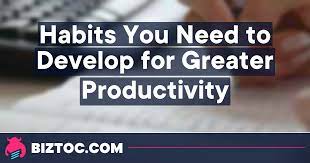Why you should use situational cues when planning for the future
- Research suggests that thinking about performing a certain behavior in a certain situation, and mentally linking the two, can create new habits.
- Strategically linking an intention to a situation can help people remember that intention.
- People high on the personality dimension of conscientiousness are particularly good at executing this type of if-then thinking.
A new study published in PLOS ONE explains how one can make long-term behavioral changes by using ‘if-then’ action planning instead of relying purely on motivation or willpower.
“Habits result from repeated past experiences of executing a specific behavior in a particular situation,” says psychologist Torsten Martiny-Huenger from UiT The Arctic University of Norway. “An open question, however, is how novel behaviors become habits. We do not have the prior experiences that make them habitual. So, how are they formed?”
The researchers hypothesized that people create new habits by thinking about performing a certain behavior in a certain situation — in other words, by creating stimulus-response links in thought.
According to Martiny-Huenger, people usually take one of three approaches when executing an action intended for the future. Here’s an example:
Suppose you agree to do a friend a favor — for example, sending a web address that you have as a bookmark on your home computer. You can’t access the bookmark right away. How are you able to complete the task some hours later? Here are three possibilities:
- The first approach is to verbally repeat it to yourself continuously (i.e., keep it active in working memory). However, given the many demands of our daily life, it is unlikely that we can remain focused in such a way for a prolonged amount of time.
- Researchers in prospective memory provide another possible mechanism. They suggest that such an intention (sending the bookmark later) activates a monitoring process that we are only minimally aware of. However, it is hard to test whether a subconscious monitoring process exists or not.
- The third alternative depends on the brain’s ability to form associative links. The intention to send the web address may be linked to a situational cue. For example, while reading emails on your home computer, the friend may be referred to in one of the emails (situational cue). This cue then triggers the recollection of having to send the bookmark.
The authors found evidence to suggest that the third possibility is the primary method through which memories are prompted and new habits are formed. Furthermore, they suggest this method can be used strategically by people to improve memory and habit formation.
For example, when receiving the web address request, one can think repeatedly, “the next time I start my home computer, I’ll first send my friend the web address.” Instead of relying on some coincidence to remind one about the intention, one can strategically link the intention to a situation.
“Research indicates that making such if-then plans — which are nothing more than verbal situation-response links — facilitate remembering,” explains Martiny-Huenger.
The researchers also found that people high on the personality dimension of conscientiousness were particularly good at executing this type of if-then thinking. This is not terribly surprising, according to Martiny-Huenger, as conscientiousness is characterized by habitual planning behaviors like making lists and using a calendar.
“Our interpretation of this result is that thinking in a situation-response format is one of the cognitive procedures that conscientious people are habitually doing,” says Martiny-Huenger. “This intuitive use of a beneficial strategy contributes to being more successful in day-to-day self-regulation.”
From a practical perspective, when dealing with behaviors we cannot execute right away, the authors advise people to rely less on motivation and willpower and more on associative cues.
“The practical advice is to link the intended behavior to situational cues that provide good opportunities to initiate them,” says Martiny-Huenger. “When you want to get a little more physically active, for instance, then repeatedly think to yourself, ‘When I’m waiting in front of the elevator, I’ll turn around and use the stairs.’ Such if-then planning is not magic and it will not lead to successfully implementing the intended behavior every time, but it will increase the likelihood of completing them.”

